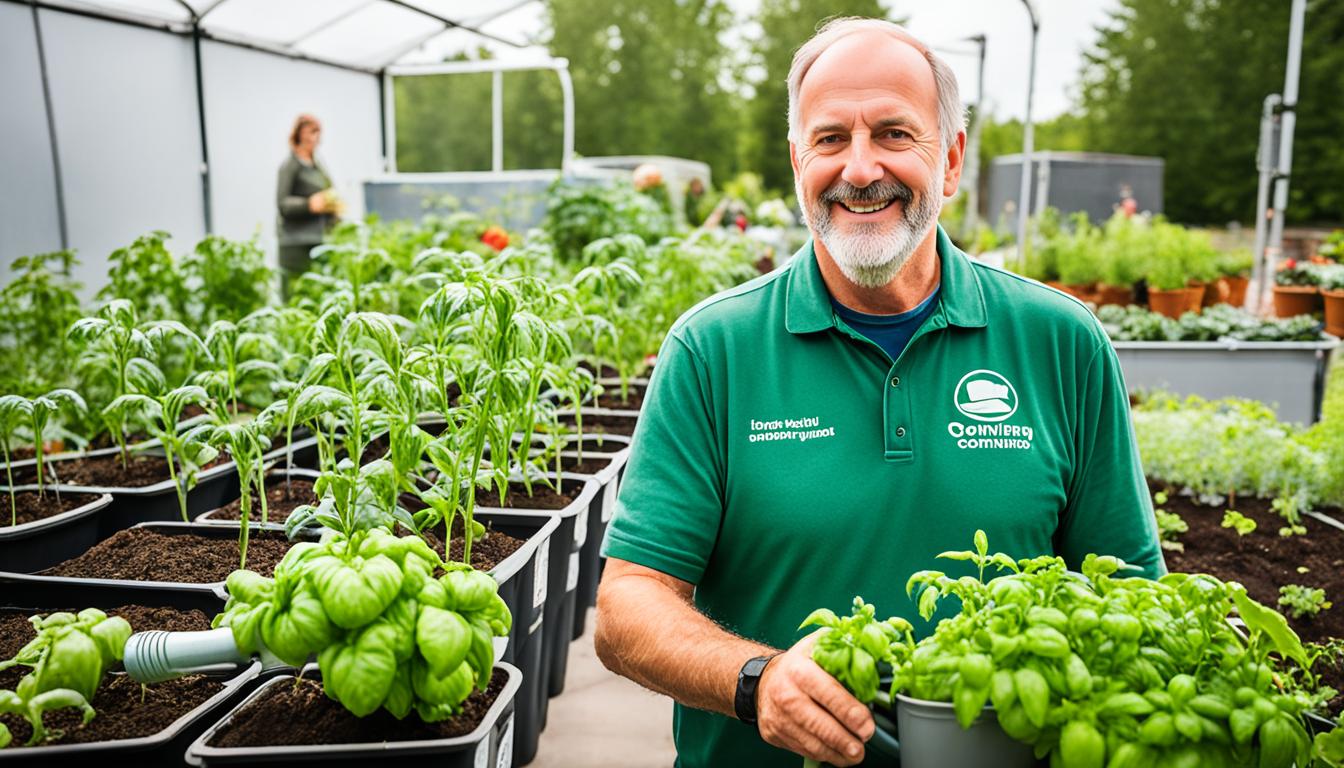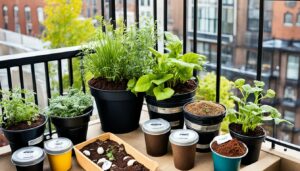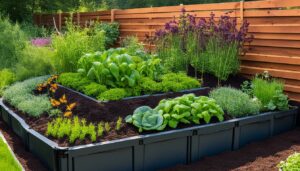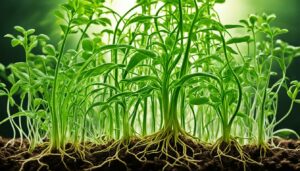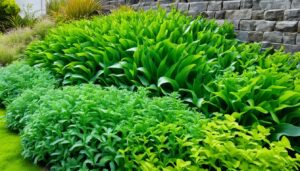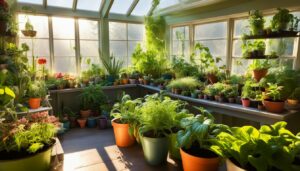“The greatest fine art of the future will be the making of a comfortable living from a small piece of land.” – Abraham Lincoln. At the heart of this profound reflection lies the essence of container gardening, a practice steeped in simplicity yet often shrouded in myth. As we venture into the verdant world of urban horticulture, it’s essential to sift through the soil of speculation to unearth the truths hidden beneath. In doing so, we are debunking container gardening myths and cultivating gardens that burgeon with potential—limited not by size, but only by our willingness to learn and adapt.
Throughout this article, we unravel the tangled vines of hearsay to reveal the solid ground of research. We will dissect container gardening facts vs myths, dispelling container gardening myths that impede the growth of our cherished green sanctuaries. By helping you distinguish between garden hearsay and horticultural evidence, your container garden is promised a future as blooming as Lincoln’s envisioned art.
Key Takeaways
- Identify and correct common misconceptions that limit container gardening success.
- Learn about the scientifically-backed techniques that should replace outdated practices.
- Understand why drainage myths can be detrimental to plant health.
- Recognize that the label ‘organic’ in pesticides doesn’t ensure safety by default.
- Embrace accurate container gardening facts over myths for healthier urban green spaces.
- Gain insights into the sound horticultural evidence supporting container gardening best practices.
Common Misconceptions About Potted Plant Care
As we delve into the truth about container gardening myths, it’s important to address some of the most common container gardening misconceptions that could be hindering the health and productivity of your plants. Here we unpack a couple of persistent myths and shed light on the actual practices that lead to thriving potted gardens.
Debunking the Layered Drainage Myth
Contrary to popular belief, adding a layer of rocks or shards at the bottom of your containers does not aid in drainage. While this practice has been touted as a solution for waterlogged soils, current research reveals that it may, in fact, impede effective water movement. The truth about container gardening myths like this unveils that a superior approach is to utilize a homogenous, quality potting mix all the way through the container. To further enhance drainage without sacrificing valuable soil space, consider placing a mesh screen over the drainage holes, a technique in line with debunking container gardening myths for optimal plant wellness.
Organic Pesticides: Natural Doesn’t Always Mean Safe
When it comes to pest management, the organic label does not automatically equate to safety. Debunking container gardening myths surrounding pesticides, it’s essential to acknowledge that even natural or organic products can pose risks to beneficial insects, humans, and pets. Take, for instance, pyrethrum—an organic pesticide that, despite its origins, can be detrimental if improperly handled. True garden stewardship calls for a careful selection of the least toxic solutions and precise adherence to usage instructions, prioritizing safety above all else.
Understanding these misconceptions is crucial in mastering the art of container gardening. Below is a comparative table that further illustrates the contrast between popular myths and the scientific truths that should guide our gardening practices:
| Container Gardening Myths | Scientific Truths |
|---|---|
| A layer of gravel at the pot’s base improves drainage. | Even drainage is best achieved using uniform potting soil without coarse layers. |
| All organic pesticides are safe to use. | Some organic pesticides can still harm beneficial organisms and require careful handling. |
| Container plants don’t require the same care as in-ground plants. | Container plants have unique needs but require the same consideration for soil health, watering, and light as in-ground plants. |
Container Gardening Myths and How They Affect Soil Health
When it comes to container gardening, the distinction between fact and fiction can significantly influence the health of your plants. Debunking container gardening myths is not just about correcting misinformation; it’s about promoting practices that align with the well-being of the soil ecosystem, essential for plant productivity and longevity.
The Truth About ‘No Till’ Soil Practices
Traditional gardening wisdom may tout the benefits of frequent tilling, but dispelling container gardening myths reveals a different narrative. The ‘no till’ method is a revolutionary approach that respects and preserves the soil’s natural structure, fostering an optimal balance of moisture and aeration. By leaving the soil undisturbed, the diverse microorganisms that contribute to soil fertility remain active and efficient in supporting plant growth.
Understanding Soil’s Living Ecosystem
Soil is not a lifeless growing medium but a vibrant ecosystem teeming with microorganisms that play a pivotal role in plant health. Moving beyond the common container gardening misconceptions, it’s imperative to understand that soil life extends far beyond what we can see. This dynamic community of bacteria, fungi, and insects are the unseen heroes, transforming organic matter into nutrients and maintaining soil structure. Protecting this ecosystem means embracing practices that nurture rather than disrupt this intricate web of life.
Mulching Misconceptions in Container Gardening
Mulching is often misunderstood in the realm of container gardening. Instead of considering it necessary to dig mulch into the soil, this method should be seen as a protective layer that enhances soil quality from the top down. Organic mulch serves as a slow-release fertilizer as it decomposes, encourages moisture retention, and helps regulate soil temperature. By applying a layer of mulch, gardeners can maintain a healthy microclimate on the soil’s surface, conducive to vigorous plant development.
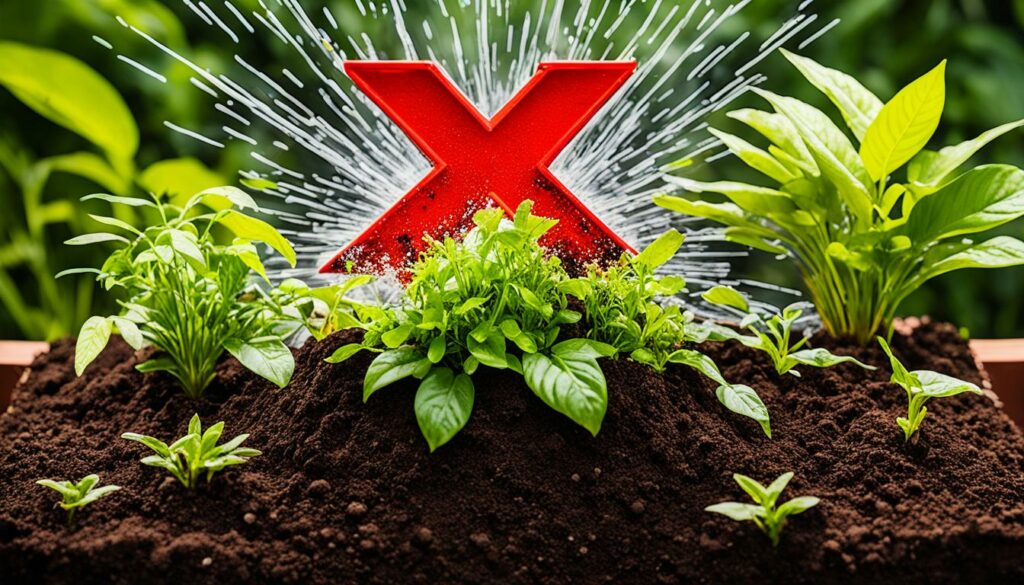
In the effort to debunk container gardening myths, it’s essential to consider the implications of each practice on soil health. Let’s examine some of the notable facts and myths:
| Container Gardening Myth | Fact |
|---|---|
| Constant tilling is necessary for healthy soil | ‘No till’ practices maintain soil structure and biodiversity |
| Soil life is not critical for plant health | Soil’s living ecosystem is fundamental for nutrient processing and plant vitality |
| Mulch needs to be dug into the soil | Mulch naturally integrates with soil through the activity of soil organisms |
By dispelling container gardening myths and highlighting the truths, we empower gardeners to adopt more effective and sustainable practices. Understanding the realities behind soil health and the critical role of less invasive methods plays allows us to better care for our container gardens, ensuring they thrive and contribute positively to our environment.
Conclusion
In the realm of container gardening, knowledge is as essential as sunlight and water. By **debunking container gardening myths**, gardeners empower themselves to cultivate flourishing gardens grounded in scientific reality, rather than horticultural hearsay. Dispelling myths regarding drainage practices, the supposed blanket safety of organic pesticides, and invasive soil management techniques, lays the foundation for a robust urban green space. Each myth we dismantle leads us further down a path of informed and sustainable gardening.
Understanding the **truth about container gardening myths** involves embracing practices such as avoiding coarse materials in place of a well-aerated potting mix for effective drainage and recognizing that natural pesticides require careful handling and application. Moreover, adopting ‘no till’ approaches and appropriate mulching respects the soil’s integral structure and biodiversity, fostering a healthy microenvironment where our garden plants can thrive. In essence, the journey of **dispelling container gardening myths** is also a journey towards environmental stewardship and ecological mindfulness.
Therein lies the core message: gardening success is synergistic with ecological balance. Recognizing the **container gardening facts vs myths** paves the way for practices that not only enhance the aesthetic and yield of our container gardens but also contribute positively to the broader environmental narrative. Let’s continue to cultivate our spaces with these truths in mind, ensuring that we and the ecosystems we nurture both flourish harmoniously.

